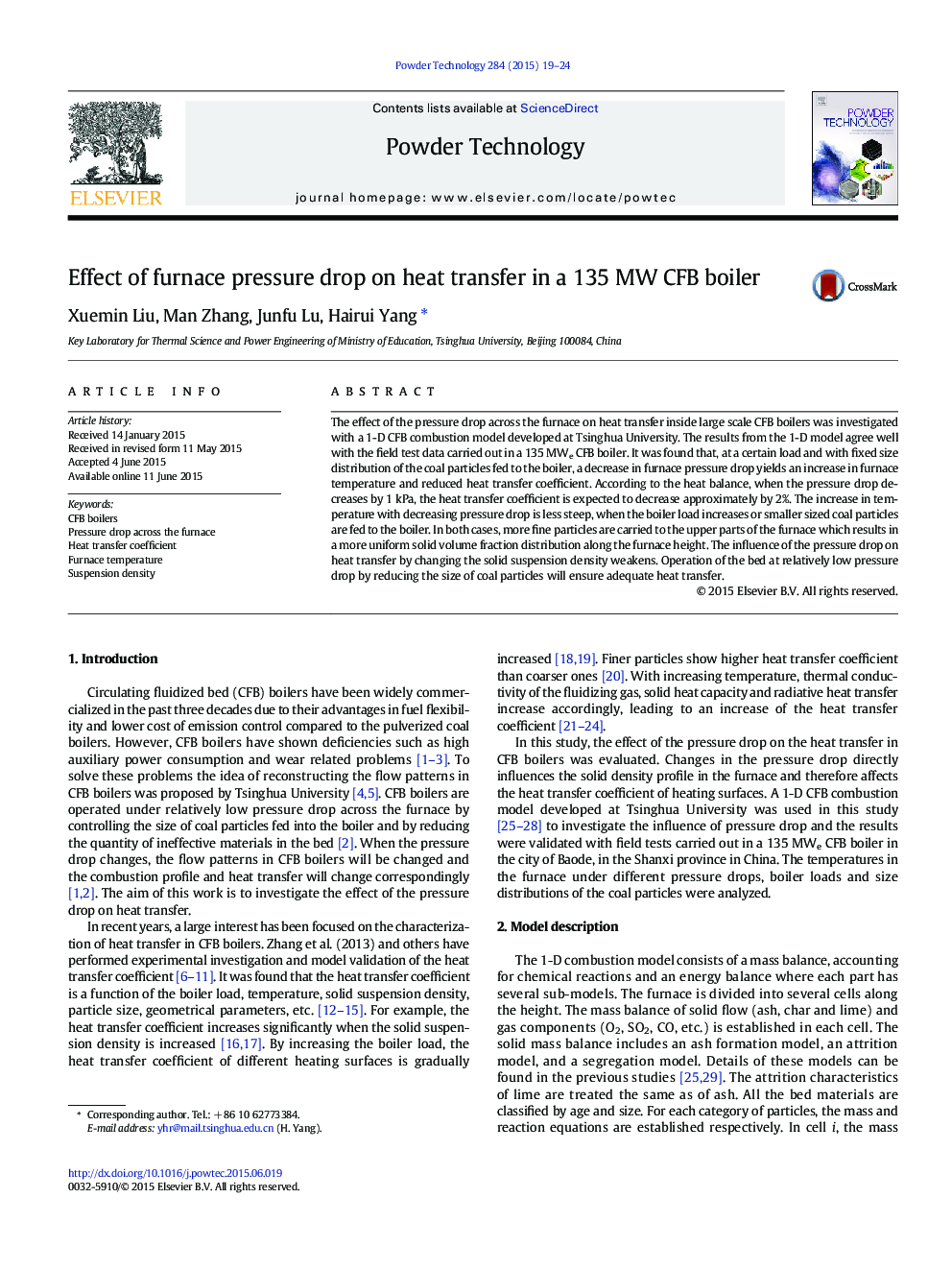| Article ID | Journal | Published Year | Pages | File Type |
|---|---|---|---|---|
| 235322 | Powder Technology | 2015 | 6 Pages |
•Effect of the pressure drop on heat transfer was investigated with a 1-D CFB model.•The calculation results were validated by field tests in a 135 MW CFB boiler.•Changes in heat transfer with flow pattern reconstruction were analyzed.
The effect of the pressure drop across the furnace on heat transfer inside large scale CFB boilers was investigated with a 1-D CFB combustion model developed at Tsinghua University. The results from the 1-D model agree well with the field test data carried out in a 135 MWe CFB boiler. It was found that, at a certain load and with fixed size distribution of the coal particles fed to the boiler, a decrease in furnace pressure drop yields an increase in furnace temperature and reduced heat transfer coefficient. According to the heat balance, when the pressure drop decreases by 1 kPa, the heat transfer coefficient is expected to decrease approximately by 2%. The increase in temperature with decreasing pressure drop is less steep, when the boiler load increases or smaller sized coal particles are fed to the boiler. In both cases, more fine particles are carried to the upper parts of the furnace which results in a more uniform solid volume fraction distribution along the furnace height. The influence of the pressure drop on heat transfer by changing the solid suspension density weakens. Operation of the bed at relatively low pressure drop by reducing the size of coal particles will ensure adequate heat transfer.
Graphical abstractFigure optionsDownload full-size imageDownload as PowerPoint slide
